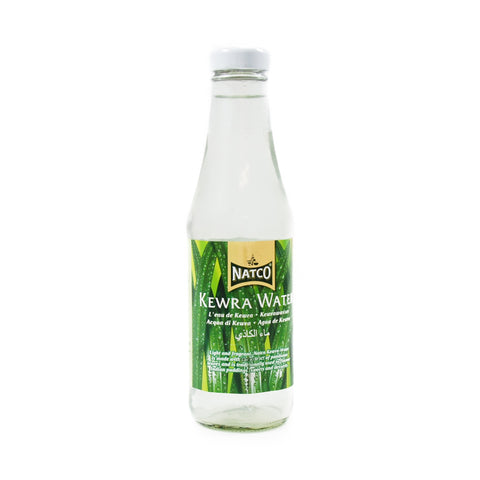Pandanus Leaf: And Pandanus Leaf Substitutes
by Jannika Resido

The pandan leaf or pandanus leaf, is a green spiky leaf used in many different cuisines. It has fresh leaves and vanilla-caramel flavours. And can be used in both savory dishes and sweet recipes. Use it to flavour rice pudding, sticky rice or even a savoury biriyani.
In this guide we'll look at its uses. plus which ingredients you can use to substitute pandanus leaf or pandan leaves if you can't find them.
Substitutes for pandan leaf:
-
Vanilla bean paste in desserts
-
Basil or tarragon (in savoury recipes)
-
A pinch of ground matcha powder
-
Bay leaves
Absolutely Everything You Want to Know About Pandan Leaf Extract and Pandanus Leaf
The Enigmatic Pandan Leaf: An Overview
The pandan leaf, often referred to as the "screwpine," is not a pine at all, but a genus of monocots with over 750 species. Native to the tropics and subtropics, the Pandan leaf is a staple in coastal and island communities where it thrives.
Its narrow, sword-like leaves spiral in an arresting pattern, which is how it earned its nickname. The leaves are not only robust in form but also in the variety of uses they offer.
The pandan leaves can be woven into mats and baskets, and their natural aroma is often harnessed in cooking.
In some recipes, they will be knotted and used to infused milks or cooking water.
It is not typically eaten directly but rather steeped in the cooking process much like a bay leaf.
You might also find Pandan paste, or pandan water - often called 'kewra water' - ready to use.
The Significance of the Pandanus Leaf
The Pandanus leaf is deeply ingrained in the cultural tapestry of many Asian and Pacific societies. For centuries, it has been emblematic of resourcefulness and sustainability, a true gift of nature.
Beyond its practical applications in weaving and thatching, the Pandan leaf plays a vital role in the culinary realm.
Its unique, sweet fragrance and flavour-enhancing qualities make it a favoured ingredient in traditional dishes. In ceremonies and rituals, the leaves are often used as decorations and offerings, symbolising life and fertility.
The Pandanus also holds a place in herbal medicine, used to treat a variety of ailments, reflecting the deep-seated belief in its healing powers.
Cultivation and Harvesting of Pandanus
The Growing Process: From Seed to Leaf
The life cycle of Pandanus flowers begins with a seed, which is often dispersed by water or animals.
Once rooted, the plant grows slowly, favouring well-drained, sandy soils, typically found along shorelines or in other tropical environments.
The propagation can also occur from cuttings, a method used to maintain certain desired characteristics of the plant.
As the plant matures, it develops aerial roots that help support its weight and absorb nutrients.
Harvesting the leaves requires careful timing; they must be picked when mature enough to ensure strength and flexibility for weaving or cooking, yet before they become too tough.
This sustainable practice allows the plant to continue growing, providing a fresh, continuous supply of leaves with minimal impact on the environment.
Harvesting Techniques for Optimum Quality
The leaves are typically gathered early in the morning when they are full of moisture and pliability.
Experienced harvesters select leaves that are young yet mature enough, avoiding those that are old or damaged.
They use sharp knives or sickles to make clean cuts that help in preserving the plant's health and encouraging new growth.
Part of the process also involves understanding the plant's growth cycle to sustainably harvest the leaves without depleting the plant.
Leaves from the same plant are not harvested all at once but in a staggered fashion, which allows time for the plant to recuperate and continue its growth.
Proper handling post-harvest is crucial, too; leaves and fruit are often rolled or folded in a particular way to prevent damage and retain their aromatic properties during transportation and storage.
Culinary Uses of the Pandanus Leaf
Enhancing Flavour: Pandanus in Cooking
In the culinary world, the Pandanus leaf is renowned for its ability to infuse dishes with a floral and nutty essence.
Primarily used in Southeast Asian and South Asian cuisine, the pandan leaf is often tied in a knot and added to rice, curries, and desserts for its distinct flavour and aroma.
It is not typically eaten directly but rather steeped in the cooking process much like a bay leaf.
The leaves can also be used to wrap food before cooking, which imparts a subtle taste and aroma to the dish while keeping the ingredients moist. This technique is evident in popular dishes such as the Indonesian 'pandan chicken'.
Moreover, the leaf extract, with its vibrant green hue, is used as a natural colouring in many fruits, sweets and drinks, enhancing not just the flavour but the visual appeal of the food. The versatility of the Pandan leaf in cooking is a celebration of its unique properties and the cultural traditions it embodies.
Traditional Recipes with a Pandanus Twist
Pandanus leaves have been woven into the fabric of traditional recipes across Asia, lending their unique essence to a variety of classic dishes.
- One such delicacy is the Thai dessert 'khanom chan', a layered sweetmeat that combines the subtle fragrance of Pandanus with coconut milk.
- Another example of pandan using is the Filipino 'pandan cake', a light, fluffy sponge that gets its characteristic flavour and green tint from the juice of the leaves.
- Savoury dishes also benefit from the Pandan leaf's flavour, such as in the Sri Lankan 'pandanus rice', where the leaves are cooked with rice to impart a rich aroma.
- Pandanus to enhance the taste of Vietnamese 'cha la lot', minced meat wrapped in betel leaves and cooked with Pandanus leaves for added depth of flavour.
These traditional recipes not only showcase the culinary versatility of the Pandan leaf but also its enduring role in cultural gastronomy.
Pandan, Kewra and Pandanus
There is a lot of confusion about what the leaf is called (pandanus), what kewra water is, and what pandan extract is:
- Pandanus leaf - the leaf of the plant
- Pandan leaf extract - an extract of the pandanus leaf used in cooking
- Kewra water - often thought to be the extract of the pandanus flower. However, it's in fact also used interchangeably with pandan leaf extract.
Medicinal Benefits of the Pandanus Leaf
Ancient Remedies and Modern Applications
The Pandan leaf has a storied history in traditional medicine, where it has been used to treat a range of conditions. In ancient times, the leaves were considered a remedy for headaches and arthritis, and their juice was used as a natural antiseptic for wounds.
The leaves are also believed to have pain-relieving properties and were used to soothe earaches by placing warmed leaves over the affected area.
Modern research has begun to explore these traditional uses, investigating the potential health benefits of the Pandan leaf. Studies suggest that the leaf contains compounds with anti-inflammatory and analgesic effects, supporting its historical use in pain management.
Additionally, the potential for Pandanus leaves in managing blood sugar levels is being examined, which could be promising for diabetes care. While more scientific research is needed to confirm these benefits, the traditional applications of Pandanus leaves offer a rich foundation for modern medicinal applications.
Scientific Studies Supporting Medicinal Use
The medicinal properties of the Pandanus leaf, long observed in traditional healing practices, are now the subject of scientific scrutiny. Studies have identified various bioactive compounds in the pandan leaves alone, including flavonoids and alkaloids, which are known for their antioxidant and therapeutic effects.
For instance, research has highlighted the leaf's potential in managing glycemic index, which is critical for diabetes control.
Additionally, the antimicrobial properties of Pandanus leaves have been validated through studies that demonstrate their efficacy against several strains of bacteria and fungi. This supports the tea leaf's traditional use as a natural preservative and in treating infections.
Another area of interest is the possible anxiolytic (anxiety-reducing) effects of the leaf, which could contribute to mental health care. While these studies provide a scientific basis for the medicinal use of Pandanus leaves, they also pave the way for future pharmaceutical applications, elevating the humble Pandanus leaf to the status of a natural remedy backed by science.
Environmental Impact and Sustainability
The Pandanus Leaf and Ecosystem Health
The Pandanus leaf's role extends beyond human use to become a key player in ecosystem health. In coastal regions where Pandanus plants are native, they help prevent soil erosion with their extensive root systems. This is particularly important in protecting shorelines against the increasing threats of climate change and rising sea levels.
The tree with thick foliage also provides habitat for a variety of wildlife, contributing to biodiversity.
Sustainably harvested Pandanus leaves have a lower environmental impact compared to synthetic materials often used in similar applications. As awareness of environmental issues grows, the biodegradable nature of Pandanus leaves becomes even more valuable.
Communities that rely on Pandanus for their livelihood are often stewards of their local environments, using traditional knowledge to manage the plants responsibly. By supporting the use of natural materials like the Pandanus leaf, we can promote ecological sustainability and the health of our planet.
Promoting Sustainable Use and Conservation
The sustainable use of the Pandanus leaf is critical for the conservation of this valuable resource. Encouraging practices that do not harm the natural growth and reproduction of the Pandanus plant is essential.
This includes responsible harvesting methods that allow the plant to regenerate, ensuring a continuous supply without depleting the population.
Education and awareness are key in this effort, as local communities, often the primary harvesters, need to understand the importance of maintaining healthy Pandanus stands.
Conservation efforts are also focused on protecting the natural habitats of the Pandanus plant from deforestation and industrial development. Some regions have initiated programs to replant Pandanus trees in areas where they have been over-harvested or destroyed.
By promoting a balance between use and conservation, we can ensure that the Pandanus leaf remains an available and sustainable resource for future generations, while also preserving the health of the ecosystems where it plays a crucial role.

About the author
Jannika Resido is Sous Chef's online content specialist. She is an expert in southeast Asian food and ingredients! Jannika has several years of experience writing blogs and features for online publications. She loves savoury dishes, trying new ingredients (especially the fruity ones!) and discovering recipes from across the world.



